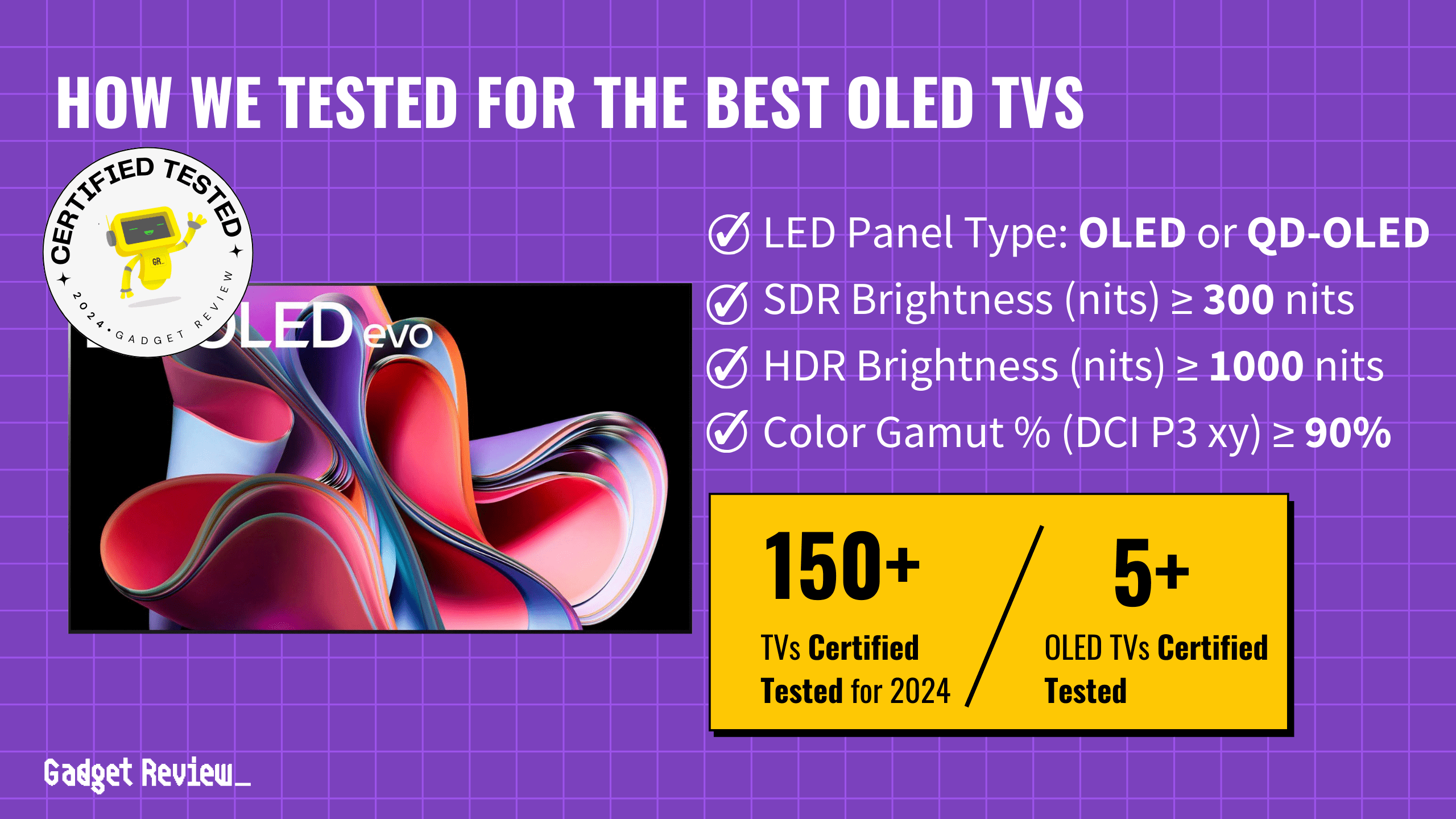For the ultimate viewing experience, the best OLED TVs are unmatched, especially if you’re after an infinite contrast ratio that brings unparalleled depth to your visuals. Perfect for gamers and sports enthusiasts, OLED TVs offer exceptional responsiveness and clarity, making every moment of action crisp and immersive. Movie lovers will appreciate the deep blacks and vibrant colors that make each scene come alive, thanks to the unique ability of OLED panels to turn pixels off completely.
Despite their slimmer profile adding a sleek look to any room, OLED TVs do come with a higher price tag compared to LED options. However, the investment is worth it for these top TVs’ best-in-class picture quality, ensuring you get the most out of your viewing experience.


TL;DR
When you shop through our links, you’re backing our mission.
🏆 Opt for the Samsung S90C with stellar response time, top pick for gamers.
🎭 Definitely get the Sony A95L for precision HDR, perfect for home theater buffs.
🌟 Grab the LG G3 OLED for unmatched HDR brightness, best for cinema lovers!
⏱ Choose the Samsung S95C over the S90C, ideal for bright room gaming.
🎨 If price matters, grab the LG B3, it rivals G3’s visuals at a lower cost.
How Did We Rank the Best OLED TVs?
To assess how high or low quality a TV actually is for OLED TVs, one must evaluate specific testing criteria against reference industry standards. Using our thorough TV Testing Methodology, we determined there are 1 minimum specs and 6 criteria below (3 required, 3 nice to have) that ensure your OLED TV looks as good as the creator intended it.
Minimum Specifications
- LED Panel Type: OLED OR QD-OLED OR WOLED
Test Criteria
- SDR Brightness: Equal to or greater than 300 nits, ensuring a bright and clear display under any lighting conditions.
- HDR Brightness: 1000 nits or more, to reveal the finest details in high dynamic range content.
- Color Accuracy: At least 90% of the DCI P3 color gamut, providing rich and vibrant colors.
“Nice To Haves”
- Contrast Ratio: 10,000:1 or higher, offering deep blacks and bright whites for an exceptional viewing experience.
- EOTF Accuracy: Delta E less than or equal to 0.018, for precise brightness and contrast across the board.
- Fast Response Time: 10ms or less, ensuring smooth transitions without motion blur.
We’ve redefined TV buying guides, setting us apart from any other site on the planet. Our unique approach combines in-house verification with a comprehensive dataset from over 200+ trusted sites, focusing on key testing metrics to rank the top-rated OLED TVs. Testing data and specs include SDR brightness of at least 300 nits, HDR brightness of 1000 nits and above, and color accuracy with a minimum of 90% DCI P3 color gamut. We aggregate and analyze this data from 158+ TVs, ensuring our recommendations meet your specific needs. For the best OLED TV, this means delivering unparalleled resolution, exceptional brightness and color fidelity for an immersive viewing experience. Our commitment to unbiased reviews is powered by our ‘True Score’ system, targeting low quality and fake reviews. Commissions fund this mission. No bias. No BS.
Latest Updates
- 03/06/2024: Completely and thoroughly overhauled the guide to include the best and latest OLED TVs.
- 11/29/2023: Republished the list to include TVs based on our True Score system.
Top OLED TVs For 2025
Prices accurate at the time of publishing
To snag a spot on our list, a OLED TVs needs to have a panel type of OLED OR QD-OLED OR WOLED, an excellent response time, color gamut and EOTF. If it doesn’t hit these points, we’re not including it!

Best Overall

Runner Up

Best Value

Best Budget

Best Mid-Range

Premium Pick
Samsung S90C TV
Best For Gaming
A top pick for gamers and sports fans with low input lag and best-in-class response time, balanced by vivid colors and affordability.
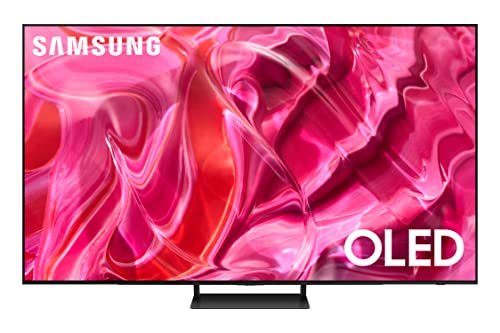
True Score
87938Experts
935kCustomers
Absolutely Fresh
 SAVE $500$1,499.99$999.99
SAVE $500$1,499.99$999.99Read More
Snapshot
Reasons to Buy
- Excellent picture quality
- The near-infinite contrast ratio for perfect blacks
- High peak brightness
- Exceptionally wide viewing angle
- Low input lag/Response time
- Sharp upscaling
Reasons to Avoid
- Aggressive Auto Brightness Limiter (ABL)
- No support for DTS or Dolby Vision
Specifications
Max Resolution 3840 x 2160 (4k) 
Backlight Type n/a Refresh Rate 120 Hz, 144 Hz Display Type OLED HDMI Inputs 4 
HDMI Type HDMI 2.1 HDR Format HDR10+, HLG 
HomeKit Compatible No 
Number of Audio Channels 2.1 
Panel Type OLED Screen size 55", 65", 75", 83" 
Smart Platform Tizen 
Speaker Output 40 Watts 
Sync Technology AMD FreeSync Premium 
VRR Yes All Specs
Test Results
SDR Brightness (nits) 373 HDR Brightness (nits) 1,058 Color Gamut % (DCI P3 xy) 99.975 Response Time (ms) 1.4 Contrast Ratio (x:1) 0 EOTF (600 nit delta) 0.0031 Color Gamut % (DCI P3 uv) 99.95 Color Gamut % (Rec 2020 xy) 86.37 Color Gamut % (Rec 2020 uv) 91.59 Color Gamut % (sRGB) 0 Color Gamut % (Rec 709) 0 Color Gamut % (BT.2020) 76 Color Gamut % (Adobe RGB) 0 Color Gamut % (BT.709) 0 Input Lag (ms) 8.5 Color Washout (Degrees) 70 Color Shift (Degrees) 70 Brightness Loss (Degrees) 70 Reflections (%) 1.2 Low-Freq Extension (Hz) 84.76 Freq Response StdDev @ 70db 2.8 Freq Response StdDev @ 80db 3.63 Weighted Total Harmonic Distortion @80db 0.133 Intermodulation Distortion @80db 2.47 EOTF (1000 nit delta) 0.0036 EOTF (4000 nit delta) 0.0024 All Tests
All Retailers
- $999.99$1,500Save $500
Availability
In StockFree Shipping
No - $1,134.95$1,197Save $62
Availability
In StockFree Shipping
No - $1,389.00$2,598Save $1,209
Availability
In StockFree Shipping
No
Our Verdict
If you’re looking to focus mostly on competitive gaming or watching tons of sports, the Samsung S90C is extremely hard to pass up. Thanks to its low input lag of 8.5 ms and best-in-class response time of 1.4 ms, the S90C is a top contender for competitive gaming enthusiasts and sports fans. The snappy response and low input delay match perfectly with the 120 Hz refresh rate and HDMI 2.1 support, ensuring action stays smooth and blur-free and whatever console you own is supported.
Although its SDR brightness of 373 nits and HDR brightness of 1058 nits put it behind the G3 by a noticeable amount, the S90C is also cheaper, and compensates for its reduced brightness with a best-in-class color gamut coverage of 99.98% on the DCI P3 xy spectrum, meaning that SDR, HDR and home theater content is vivid and true to life.
What sets the Samsung S90C apart is its exceptional color reproduction and gaming performance at a more attractive mid-range price point, making it a versatile choice for a wide audience. Whether it’s for watching movies with rich and accurate colors, gaming with minimal lag and quick response, or enjoying HDR content, the S90C delivers a balanced and high-quality experience.
Read Less

Best Overall

Runner Up

Best Value

Best Budget

Best Mid-Range

Premium Pick
Sony A95L OLED TV
The luxury choice for unparalleled HDR precision and color accuracy, best suited for those where price is no barrier to the ultimate viewing experience.

True Score
86926Experts
932kCustomers
Absolutely Fresh
 SAVE $1,599$3,577.95$1,979.00
SAVE $1,599$3,577.95$1,979.00Read More
Snapshot
Reasons to Buy
- Stellar picture quality in the dark
- High peak brightness
- Fast response time and low 4K input lag
- 120 Hz refresh rate
- Ultra-wide viewing angles
Reasons to Avoid
- Slightly high full HD input lag
- Slight purple haze
- No FreeSyc support
Specifications
Max Resolution 3840 x 2160 (4k) 
Backlight Type No Refresh Rate 120 Hz Display Type QD-OLED HDMI Inputs 4 
HDMI Type 2.0, HDMI 2.1 HDR Format Dolby Vision, HDR10, HLG 
HomeKit Compatible Yes 
LED Panel Type OLED 
Number of Audio Channels n/a 
Panel Type OLED Screen size 55", 65", 77" 
Smart Platform Android TV, Google TV 
Speaker Output 60 watts 
Sync Technology G-Sync 
VRR Yes All Specs
Test Results
SDR Brightness (nits) 309.5 HDR Brightness (nits) 1,262 Color Gamut % (DCI P3 xy) 99.96 Response Time (ms) 9.6 Contrast Ratio (x:1) 0 EOTF (600 nit delta) 0.0022 Color Gamut % (DCI P3 uv) 99.97 Color Gamut % (Rec 2020 xy) 85.78 Color Gamut % (Rec 2020 uv) 90.25 Color Gamut % (sRGB) 0 Color Gamut % (Rec 709) 99.9763 Color Gamut % (BT.2020) 89 Color Gamut % (Adobe RGB) 0 Color Gamut % (BT.709) 0 Input Lag (ms) 16.4 Color Washout (Degrees) 70 Color Shift (Degrees) 70 Brightness Loss (Degrees) 70 Reflections (%) 1 Low-Freq Extension (Hz) 84.76 Freq Response StdDev @ 70db 2.45 Freq Response StdDev @ 80db 2.39 Weighted Total Harmonic Distortion @80db 0.139 Intermodulation Distortion @80db 0.7 EOTF (1000 nit delta) 0.0019 EOTF (4000 nit delta) 0.0023 All Tests
All Retailers
- $1,979.00$3,578Save $1,599
Availability
In StockFree Shipping
No - $1,999.99$3,500Save $1
Availability
Free Shipping
No - $2,898.00$3,498Save $600
Availability
Free Shipping
Availability
Free Shipping
Our Verdict
If you want home theater performance right out of the box, the Sony A95L offers up best-in-class EOTF performance, boasting a delta of 0.0022. This makes the A95L the best option for rendering HDR content with exceptional precision, accurate gamma, and smooth gradations between the darkest and brightest parts of an image.
It also excels in color accuracy, boasting a DCI P3 xy color gamut coverage of 99.96% and just barely missing out on the top spot when it comes to coverage. Paired with an HDR brightness of 1262 nits, A95L delivers HDR images that are not only accurate but also vibrant and full of contrast, suitable for a variety of content from cinematic masterpieces to high-octane sports. However, its SDR brightness of 309 means that it will struggle in basic content if you put it in a brightly lit room.
Where the A95L drags its feet, however, is input lag – at 16.4 ms, the TV is still more than usable for gaming, but competitive gamers would be better served by the S90C. If you’re a sports fan, the 9.6 ms response time is also perfectly serviceable, but better options exist on our list, both earlier and later.
In essence, the Sony A95L is a luxury TV that prioritizes HDR performance and color accuracy. If money is no object, it is an ideal choice for the viewer who seeks the ultimate in television picture quality with its exceptional EOTF performance and color gamut coverage.
Read Less
DID YOU KNOW 87% OF TV REVIEWERS ARE UNTRUSTWORTHY?
Our research found 28 of 210 TV reviewers can be trusted, and shockingly 1 out of 3 on Google Page 1 were fake reviews showing no proof of test claims. See our Expose and Trust List. This is why Gadget Review is committed to calculating the most accurate product scores on the web.
To do this, we give every TV review site a Trust Rating, which measures how trustworthy the site and their testing claims are. We then leverage AI & a machine learning model to combine and calculate the Trust Rating with data from experts and consumers to deliver the True Score, the web’s most accurate product quality rating.

Best Overall

Runner Up

Best Value

Best Budget

Best Mid-Range

Premium Pick
LG G3 OLED TV
Best For Sports
The G3 excels with top SDR and HDR brightness and minimal reflections, making it ideal for bright rooms and versatile content viewing.
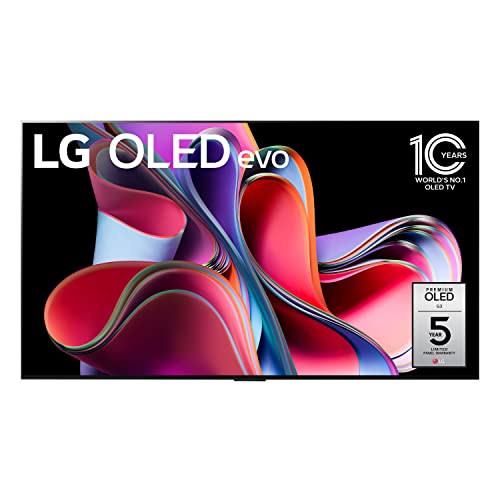
True Score
869315Experts
922kCustomers
Absolutely Fresh
 SAVE $1$3,296.99$1,996.99
SAVE $1$3,296.99$1,996.99Read More
Snapshot
Reasons to Buy
- Excellent picture quality
- Near-infinite contrast ratio resulting in perfect blacks
- Extremely bright for an OLED
- Fast motion handling
- Exceptionally wide viewing angle
Reasons to Avoid
- Aggressive automatic brightness limiter
- Subpar sound quality
Specifications
Max Resolution 3840 x 2160 (4k) 
Backlight Type n/a Refresh Rate 120 Hz Display Type OLED HDMI Inputs 4 
HDMI Type HDMI 2.1 HDR Format Dolby Vision, HDR10, HLG 
HomeKit Compatible Yes 
Number of Audio Channels 4.2 
Panel Type OLED Screen size 55", 65", 77", 83" 
Smart Platform webOS 
Speaker Output 60 watts 
Sync Technology G-Sync 
VRR Yes All Specs
Test Results
SDR Brightness (nits) 503 HDR Brightness (nits) 1,385 Color Gamut % (DCI P3 xy) 97.5457 Response Time (ms) 2.6 Contrast Ratio (x:1) 0 EOTF (600 nit delta) 0.0027 Color Gamut % (DCI P3 uv) 99.13 Color Gamut % (Rec 2020 xy) 73.65 Color Gamut % (Rec 2020 uv) 75.48 Color Gamut % (sRGB) 100 Color Gamut % (Rec 709) 99.7631 Color Gamut % (BT.2020) 74.4 Color Gamut % (Adobe RGB) 94 Color Gamut % (BT.709) 0 Input Lag (ms) 11.8 Color Washout (Degrees) 70 Color Shift (Degrees) 70 Brightness Loss (Degrees) 70 Reflections (%) 0.9 Low-Freq Extension (Hz) 89.8 Freq Response StdDev @ 70db 2.01 Freq Response StdDev @ 80db 2 Weighted Total Harmonic Distortion @80db 0.143 Intermodulation Distortion @80db 1.4 EOTF (1000 nit delta) 0.0039 EOTF (4000 nit delta) 0.0036 All Tests
All Retailers
- $1,996.99$3,297Save $1
Availability
In StockFree Shipping
- $2,369.99$2,797Save $427
Availability
In StockFree Shipping
No - $2,899.00$3,300Save $401
Availability
In StockFree Shipping
No
Our Verdict
The LG G3 earns fantastic marks thanks to its well-rounded performance across all categories. Its standout features include an SDR brightness of 503 nits and a best-in-class HDR brightness of 1385 nits, ensuring that it provides an exceptionally vivid picture across a wide range of content. Coupled with a best-in-class reflections handling of 0.9% light reflected, the G3 is particularly well suited to delivering all types of content in brighter rooms.
Like other OLED panel televisions, the G3 boasts nearly infinite contrast and much wider viewing angles than standard LED panels. This excellent contrast couples perfectly with the G3’s strong color accuracy, with a DCI P3 xy color gamut coverage of 97.55%.
While its input lag of 11.8 ms and a response time of 2.6 ms place it in the middle of the pack for both categories, these results are still exceptional, particularly the response time. This makes the G3 an excellent option for gamers and sports fans, though the most hardcore competitive gamers may want to look for a faster input lag.
The G3 is, above all else, a versatile performer that excels in delivering high-quality visuals and vibrant colors, making it an excellent choice for a broad spectrum of uses, from cinematic experiences to daily TV watching in various lighting conditions. Its strengths in brightness, and minimal reflections make it particularly well suited for bright rooms, while its strong performance across the rest of the categories make it useful for anything you throw at it, from games to sports.
Read Less

DON’T SEE WHAT YOU’RE LOOKING FOR?
For those seeking unparalleled picture quality, diving into our picks for the best OLED TVs might be your next move. Check out the top wall mounts if you want to hang your TV on the wall. Additionally, to ensure you have great audio quality, learn how to connect a soundbar to your TV.
Also, if you have a particular use in mind, explore our recommendations for great TV monitors, top-notch gaming TVs, or the best TVs for sports enthusiasts. Alternatively, you can check out our guide to the best TV brands.

Best Overall

Runner Up

Best Value

Best Budget

Best Mid-Range

Premium Pick
Samsung S95C OLED TV
Best For Home Theater
Bright, responsive, and color-accurate, the S95C shines in natural light, making it perfect for gamers and sports fans in well-lit environments, but is somewhat expensive.
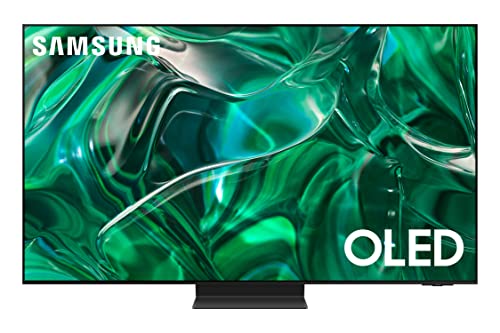
True Score
859215Experts
91723Customers
Absolutely Fresh
 $1,887.95
$1,887.95Read More
Snapshot
Reasons to Buy
- Excellent image quality
- Produces great bright colors and deep blacks
- Exceptionally wide viewing angle
- Incredibly low input lag
Reasons to Avoid
- Aggressive ABL
Specifications
Max Resolution 3840 x 2160 (4k) 
Backlight Type No Refresh Rate 120 Hz, 144 Hz Display Type OLED HDMI Inputs 4 
HDMI Type HDMI 2.1 HDR Format HDR10+, HLG 
HomeKit Compatible No 
Number of Audio Channels 4.2.2 
Panel Type QD-OLED Screen size 55", 65", 77" 
Smart Platform Tizen 
Speaker Output 70 Watts 
Sync Technology AMD FreeSync, AMD FreeSync Premium Pro 
VRR Yes All Specs
Test Results
SDR Brightness (nits) 704 HDR Brightness (nits) 1,383 Color Gamut % (DCI P3 xy) 99.81 Response Time (ms) 5.5 Contrast Ratio (x:1) 0 EOTF (600 nit delta) 0.0029 Color Gamut % (DCI P3 uv) 99.53 Color Gamut % (Rec 2020 xy) 84.99 Color Gamut % (Rec 2020 uv) 89.78 Color Gamut % (sRGB) 0 Color Gamut % (Rec 709) 141.5 Color Gamut % (BT.2020) 75 Color Gamut % (Adobe RGB) 0 Color Gamut % (BT.709) 0 Input Lag (ms) 8.3 Color Washout (Degrees) 70 Color Shift (Degrees) 70 Brightness Loss (Degrees) 70 Reflections (%) 1 Low-Freq Extension (Hz) 106.79 Freq Response StdDev @ 70db 2.45 Freq Response StdDev @ 80db 2.41 Weighted Total Harmonic Distortion @80db 0.511 Intermodulation Distortion @80db 0.511 EOTF (1000 nit delta) 0.0025 EOTF (4000 nit delta) 0.0022 All Tests
All Retailers
- $1,887.95
Availability
In StockFree Shipping
No - $1,899.99$2,300Save $400
Availability
In StockFree Shipping
No
Our Verdict
If you’re committed to Samsung and love film, the S95C stands out with an impressive HDR brightness of 1383 nits, putting it an imperceptible 2 nits behind the best-in-class G3. This ensures that high dynamic range content is displayed with striking contrast and brightness, making every scene more immersive and detailed. This is further helped along by an excellent EOTF of 0.0029, putting it just behind the G3 and A95L by a few ten-thousandths.
If you’re seeking better top-notch gaming performance in more brightly lit rooms, the S95C also offers up admirable performance. It’s brighter than its brother, the S90C, on both the SDR and HDR fronts, making it a natural choice if you need to game in rooms with lots of natural light. It also has a slight edge when it comes to input lag, clocking in at a best-in-class 8.3 ms. If you’re a hardcore competitive gamer, every tenth of a second counts.
With a DCI P3 xy color gamut coverage of 99.81%, the S95C is capable of reproducing a wide gamut of colors with near perfect accuracy. This, coupled with a solid response time of 5.5 ms, help make the S95C a great choice for sports fans in brighter spaces.
The Samsung S95C is a versatile option that excels in delivering high-quality visuals for cinematic content, gaming, or general TV viewing. If you’re looking for a centerpiece television for your home theater and it happens to be drenched in natural light more often than not, the S95C is an excellent – though expensive – choice.
Read Less
Category Snapshot
TVs
- Total Brands/Products Tested
17 Brands, 158 Products
- Top 2 Brands
LG, Hisense
- Price Range (Budget-Premium)
$400-$2000
- Average True Score
76.65
- Important Test Criteria
Brightness (cd/m2)
Contrast Ratio (1000:1) - Most Trusted Testers

- Top TV Experts
- Recommended Retailer

- Typical Warranty
1 year
- Covered by Insurance
Yes – AKKO
- Test Methodology

Best Overall

Runner Up

Best Value

Best Budget

Best Mid-Range

Premium Pick
LG B3 OLED TV
Blends vivid colors, deep blacks, and responsive gameplay into an affordable package for quality-conscious buyers.
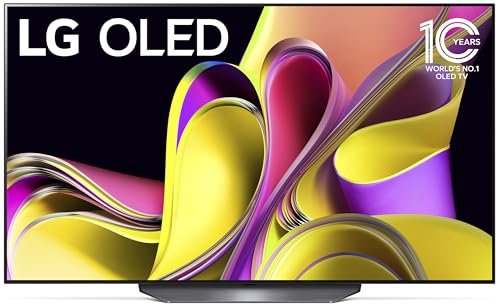
True Score
83874Experts
922kCustomers
Absolutely Fresh
 SAVE $1,251$2,399.99$1,149.00
SAVE $1,251$2,399.99$1,149.00Read More
Snapshot
Reasons to Buy
- Excellent picture quality
- Great Contrast
- High-performance motion handling
- Fast refresh rate
- Wide Viewing Angles
Reasons to Avoid
- Below Average Brightness
- Aggressive ABL
- Mediocre speaker sound quality
Specifications
Max Resolution 3840 x 2160 (4k) 
Backlight Type n/a Refresh Rate 120 Hz Display Type OLED HDMI Inputs 4 
HDMI Type HDMI 2.1 HDR Format Dolby Vision 
HomeKit Compatible Yes 
Number of Audio Channels 2.1 
Panel Type OLED Screen size 55", 65", 77" 
Smart Platform webOS 
Speaker Output 20 Watts 
Sync Technology AMD FreeSync Premium, G-Sync 
VRR Yes All Specs
Test Results
SDR Brightness (nits) 390 HDR Brightness (nits) 617 Color Gamut % (DCI P3 xy) 98.345 Response Time (ms) 3.1 Contrast Ratio (x:1) 0 EOTF (600 nit delta) 0.0067 Color Gamut % (DCI P3 uv) 99.62 Color Gamut % (Rec 2020 xy) 73.09 Color Gamut % (Rec 2020 uv) 77.66 Color Gamut % (sRGB) 0 Color Gamut % (Rec 709) 0 Color Gamut % (BT.2020) 73.14 Color Gamut % (Adobe RGB) 0 Color Gamut % (BT.709) 0 Input Lag (ms) 11.7 Color Washout (Degrees) 64 Color Shift (Degrees) 31 Brightness Loss (Degrees) 70 Reflections (%) 1.4 Low-Freq Extension (Hz) 84.76 Freq Response StdDev @ 70db 3.64 Freq Response StdDev @ 80db 3.67 Weighted Total Harmonic Distortion @80db 0.165 Intermodulation Distortion @80db 8.25 EOTF (1000 nit delta) 0.0035 EOTF (4000 nit delta) 0.0037 All Tests
All Retailers
- $1,149.00$2,400Save $1,251
Availability
In StockFree Shipping
No - $1,196.99$2,397Save $1
Availability
In StockFree Shipping
- $1,199.99$1,300Save $100
Availability
In StockFree Shipping
No Availability
Free Shipping
Our Verdict
If you’re looking for a less expensive way to enjoy the infinite contrast and deep blacks of OLED panels, the LG B3 is an excellent value. It delivers where it counts: a color gamut coverage of 98.35% for DCI P3 xy brings vivid colors to your screen and its HDR and SDR brightness levels—617 nits and 390 nits, respectively—might not break records but still allow the TV to capitalize on OLED’s strengths: deep blacks and stark contrasts, ideal for enhancing your viewing experience in any setting but brightly lit rooms.
If you’re a gamer looking for a more budget option than the G3 or C3, the B3 offers an input lag of 11.7 ms and a response time of 3.1 ms for smooth gameplay that’ll appeal to both casual and competitive players alike. The response time in particular also makes the TV well suited to watching sports, working in tandem with its 120 Hz refresh rate to keep motion blur and tearing to a minimum.
Overall, the B3 is a smart choice for value-seekers. It combines essential OLED perks—rich colors, perfect blacks, and responsive visuals —into a package that outpaces its price tag. For those aiming to get the most bang for their buck without compromising on quality, the LG B3 is your go-to, offering a premium OLED without a premium OLED price.
Read Less

Our Approach to Testing OLED TVs

Evan Shepard/Gadget Review
We aggregate and analyze this data, ensuring our recommendations meet the specific needs. Specifically, when it comes to OLED TVs, this involves selecting models that deliver optimal image quality for content for OLED TVs, including the ability to upscale lower-resolution content effectively. Discover our data-driven methodology for precise, reliable TV recommendations.
We collect data so you don’t have to. Our team averages testing results to accurately represent each product’s capabilities. Then, we filter and sort our buying guides to ensure products meet your needs, like those for OLED TVs with advanced LED panel technology. This guarantees you’re buying the correct product.
You may notice some of our graphs contain “Source: RTings”. This is to indicate that the data we’re showing off in a graph has come from a single source – because it’s the only source that actually tested the criteria and had data for it! Normally, our data is an average out of all of the various publications that test and provide data to give you a good idea of how a product is going to perform on average.
Which Criteria Matters for Testing OLED TVs?
By focusing on these criteria (3 required, 3 nice to have), anyone can quickly and easily compare these TVs and how they’ll perform. This helps you make an informed decision and purchase a TV that will fit into your space.
| CRITERIA | RANGE | REQUIRED | DEFINITION |
|---|---|---|---|
| SDR Brightness | 300+ nits | Yes | Assess the luminance of your display when operating in Standard Dynamic Range (SDR) mode. |
| HDR Brightness | 1000+ nits | Yes | Determine the luminance of your display in High Dynamic Range (HDR) mode. |
| Color Gamut (DCI P3 xy) | >= 90% | Yes | Evaluate the extent to which a TV can reproduce a specified spectrum of colors. |
| EOTF | 0.018 | No (nice to have) | Standard that governs how a display interprets and renders brightness and color. |
| Response Time | <=10ms | No (nice to have) | Time required for a pixel to transition from one color to another and then return to its original color. |
| Contrast Ratio | >= 10,000 | No (nice to have) | The percent of light is reflected off the screen when subjected to light. |
Our Trusted Data Sources
(Publication category Score is 80%+)
We looked at 210+ TV reviewers and while 24 are trustworthy (60%+ Trust Rating), we only use data from the testers that are “very trusted” which means a Trust Rating above 70%. The three we have listed below are our most trusted for TVs, along with our own in-house TV expert.
- Evan Shepard – Gadget Review
- Matthew Lopes – RTings, MuckRack
- Will Greenwald – PCMag, MuckRack, Twitter
- David Katzmaier – CNET, MuckRack, Twitter
Interested in a comprehensive analysis of our data sources? We’ve got you covered. Below, you’ll find a detailed list of every TV review website we’ve identified, organized by their respective Trust Ratings from highest to lowest. But we didn’t stop there. We’ve meticulously reviewed each publication and verified the data by checking whether the authors have bio links to MuckRack or LinkedIn. We’re committed to not only checking the facts but ensuring their veracity.
Best OLED TVs Test Data & Results
1. SDR & HDR Brightness TV Test Results
In well-lit rooms, the brightness level of your OLED TV, quantified in nits, is key to a great viewing experience. A TV that doesn’t meet the brightness requirement will struggle against natural and artificial light, resulting in a dim, lackluster image. Essentially, nits measure how well your TV can stand up to light interference, with higher values ensuring a sharper, more vivid display. This is especially important when selecting the best outdoor TVs, as they deal with direct sunlight.
For standard viewing on the best OLED TV, you should look for at least 300 nits to strike the right balance between clarity and color quality in standard dynamic range (SDR) content. For high dynamic range (HDR) content, which offers richer colors and greater contrast, a minimum of 1000 nits is ideal to truly appreciate the enhanced visuals. These brightness levels are recommended to ensure your TV performs well in bright settings, allowing you to enjoy your shows and movies without any loss in detail or quality. Aim for these minimums: SDR Brightness >= 300 nits; HDR Brightness >= 1000 nits for the optimal experience.
If you want to prioritize detailed picture quality, keep resolution in mind as well, because the best 4K TVs provide four times the resolution of standard 1080p HD TVs and in effect, more detailed displays.
Discover the top OLED TVs, ranked from brightest to least.
Brightness
SDR: 300+ nits
HDR: 1000+ nits
Acceptable range of performance
Definition: Maximum brightness in a specified pattern size window. Most commonly measured in a 10% or 100% white window.
Units of Measurement: nits (alternatively cd/m²)
Tools to Measure: TV, luminance meter
Why It’s Important:
Brightness helps counter ambient light so that details and colors don’t wash out and get lost.
SDR Brightness (in nits, higher is better)
HDR Brightness (in nits, higher is better)
2. Color Gamut (DCI P3 xy) TV Test Results
Color Gamut
>= 90%
Acceptable range of performance
Definition: The TV’s capability to display a spectrum of colors.
Units of Measurement: % (color space coverage in percent)
Tools to Measure: Colorimeter
Why It’s Important:
Inaccurate colors compromise the authenticity of the content.
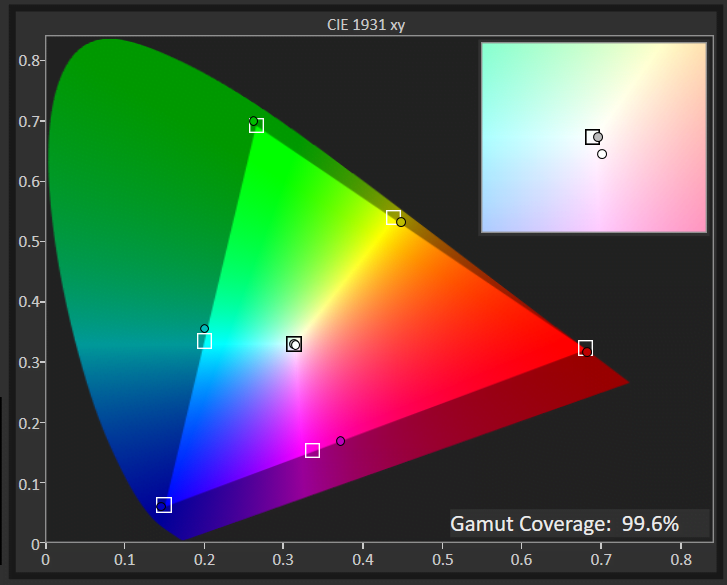
Color gamut defines the range of colors a OLED TV can reproduce, directly affecting how vibrant and true-to-life the images look. A wide color gamut in a compact TV brings out richer, more vivid colors – from the lush greens of a garden to the bright colors of animated characters, enhancing your viewing experience to closely mimic real life.
This concept is technically measured against standards like the DCI P3 xy, a benchmark for high-quality visuals. A OLED TV covering a higher percentage of this color space can display colors more accurately and vividly.
For those who prioritize vibrant and immersive visuals, aiming for a OLTV with a color gamut of 90% or higher on the DCI P3 xy scale is ideal. This ensures that the content you watch is as vibrant and lifelike as possible. OLED models are superb at reproducing this color space, thanks to their superior contrast and black levels which enhance color accuracy and vibrancy. Comparing OLED to other display technologies like LED, although they’re capable of high brightness, the best LED TVs tend to not deliver the same depth of color and contrast as OLEDs.
Below are the top OLED TVs, ordered by color gamut, all exceeding our testing criteria.
DCI P3 XY Color Gamut (as a %; high is better)
3. EOTF Test Results
The Electro-Optical Transfer Function (EOTF) plays a critical role in ensuring the content on your TV looks exactly as the creator intended. This technical feature adjusts your screen’s brightness levels, ensuring every scene, from the darkest shadows to the brightest highlights, is displayed with true-to-life accuracy.
In rooms flooded with light, a TV that nails EOTF calibration shines by preserving the intended contrast and detail in the picture despite the challenging conditions. It balances the brightness so that images remain vibrant and full of detail, unaffected by the glare of ambient light.
A TV that excels in managing EOTF offers an immersive and authentic viewing experience. It brings creators’ visions to life, accurately rendering every scene with the proper light and dark levels, no matter the lighting in your room. This means you get a consistent, realistic picture that captures the full spectrum of colors and contrasts, from the subtlest hues to the most intense explosions. Below is all the TVs on this guide sorted from best to worst in EOTF.
Below are all the OLED TVs on our list, ordered by EOTF, all exceeding our minimum requirement.
EOTF
< 0.018 (600 nit Δ)
Acceptable range of performance
Definition: How your TV interprets and renders the luminance data from content and translates it to be represented on screen. If EOTF/Gamma tracking is too low or too high, it will result in an over-brightened or over-darkened image from reference.
Units of Measurement: this test measures for the delta from the standard
Tools to Measure: Luminance colorimeter
Why It’s Important:
EOTF ensures that the game is displayed (color and HDR brightness) as the creator intended it
EOTF (source: rtings.com – 0 = no data exists; lower is better)
4. Response Time TV Test Results
Response Time
1ms-10ms
Acceptable range of performance
Definition: Speed at which a pixel transitions from one color to another
Units of Measurement: milliseconds (ms)
Tools to Measure: Screen, camera, test software
Why It’s Important:
A faster response time means less blur and thus more accuracy
A slow response time on a OLED TV during fast-paced scenes is like trying to watch a thrilling movie with a foggy lens. Imagine settling in for an action-packed sequence, only to have the swift movements turn into a blur, robbing you of the crisp, clear detail you crave. This isn’t just a minor annoyance; it’s a major detriment to your viewing experience, leaving you with a picture marred by motion blur and visual artifacts.
So, what exactly is response time? It measures how quickly a pixel on your TV can change from one color to another. In the context of watching fast-moving content or enjoying dynamic scenes on a OLED TV, a low response time is crucial. A response time of 15 ms or lower is good, but if you plan on gaming on this set, aim for a response time of 10 ms or lower. At these levels, your OLED TV ensures smooth transitions and sharp visuals, making every scene come to life without any distracting blurs or delays.
Below are the top OLED TVs, ordered by response time, all exceeding our testing criteria.
Response Time (in milliseconds; lower is better)
5. Contrast Ratio Test Results
For OLED TV enthusiasts, a solid contrast ratio is crucial for enjoying your favorite TV shows or movies, especially in darker settings. This feature directly impacts how lifelike and dynamic the picture appears on your screen, ensuring that dark scenes are displayed with clear, crisp blacks instead of murky grays and bright scenes retain their detail without appearing washed out.
Put simply, the contrast ratio is all about the range of luminance a TV can produce, from the deepest blacks to the brightest whites. It’s what brings depth to the image, enhancing the realism of every scene. Watching a movie in the dark, for example, the difference between a TV with a poor contrast ratio and one with a high ratio is stark: the former struggles, blending shadows into a flat gray, while the latter delivers true black, making night scenes more immersive and detailed.
Ideally, a contrast ratio of 10,000:1 is what you should aim for in a OLED TV. This level of luminance variance ensures that you’re getting a picture quality that can handle the nuances of lighting in any scene, providing a viewing experience that’s both rich and engaging. Note: OLED TVs have infinite contrast ratio, indicated by “0.”
Below are the top OLED TVs, ordered by contrast ratio, all exceeding our testing criteria.
Contrast Ratio
>=10,000:1
Acceptable range of performance
Definition: Difference between the darkest black and the brightest white a screen can display.
Units of Measurement: cd/m2
Tools to Measure: Luminance meter
Why It’s Important:
A higher contrast ratio delivers deeper blacks, enhancing content definition, especially in darker rooms.
Contrast Ratio (higher is better, 0=infinite)
Best OLED TVs: Mistakes To Avoid
- Ignoring Burn-In Risk: OLED TVs are susceptible to OLED burn-in, where static images or logos can permanently imprint on the screen. Avoid leaving static images on the screen for extended periods, and consider settings like pixel shift and screen savers to mitigate this risk.
- Choosing the Wrong Size: Assess your room size and viewing distance carefully before selecting the TV size. Buying a TV that’s too large or too small for your space can affect your viewing experience negatively. You don’t want to buy a top-rated 60-inch TV and realize it’s too large if you have a smaller living space and your couch can’t be placed more than 5 feet away from the TV.
- Not Considering Room Lighting: OLED TVs perform best in darker environments. If you plan to place the TV in a brightly lit room, consider how reflections and glare might affect your viewing experience. A top TV for bright rooms might be a better fit for a well-lit room.
- Overlooking Connectivity Options: Ensure the TV has the necessary ports and connectivity options to accommodate your devices, such as gaming consoles, Blu-ray players, streaming devices, and other great TV accessories. Keep in mind that a best smart TV is one type of TV with optimal connectivity and content access. They have built-in Wi-Fi and Ethernet capabilities, as well as support for a wide range of streaming services and apps directly on the TV, allowing for a more integrated and seamless experience without external devices.
The Best OLED TVs Tests Compared
Product |
True Score
|
SDR Brightness
|
HDR Brightness
|
Color Gamut
|
EOTF
|
Response Time
|
Contrast Ratio
| |
|---|---|---|---|---|---|---|---|---|
| 87 |
|
|
|
|
|
| $999.99 $1,500 $500 |
| 86 |
|
|
|
|
|
| $1,979.00 $3,578 $1,599 |
| 86 |
|
|
|
|
|
| $1,996.99 $3,297 $1 |
| 85 |
|
|
|
|
|
| $1,887.95 |
| 83 |
|
|
|
|
|
| $1,149.00 $2,400 $1,251 |


